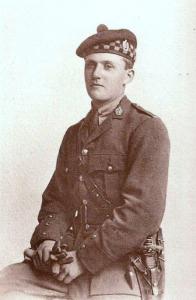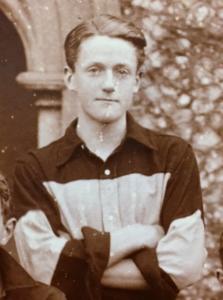
|

|
| Captain Donald Francis FERGUSON | |
|
2/3rd Scottish Horse attached to the 2nd Battalion Gordon Highlanders Date of birth: 29th July 1896 Date of death: 7th May 1917 Killed in action aged 20 Commemorated on the Arras Memorial Bay 1 |

|
| Donald Francis Ferguson was born at Bulwick Rectory, Wansford in Northamptonshire on the 29th of July 1896 the eldest son of the Reverend Edwin Augustus Ferguson of Rector of Milton, Steventon in Berkshire, and Madeline Isabella (nee Master) Ferguson, later of Banchory Rectory in Kincardineshire and of Shalford Vicarage near Guildford in Surrey. He was educated at Mr J. Douglas' School at Godalming in Surrey and at Lancing College where he was in Olds House from September 1909, in News House from September 1910 and in Fields House from September 1912 until July 1914. He was a member of the Cricket XI in 1912 and 1913 and was their Secretary in 1913. He was a member of the Football XI from 1911 to 1913 and was Secretary in 1913. He was Captain of Fives in 1913 and was Captain of the Gym VI in the same year. Sports 1913-1914. He was a member of the Officer Training Corps in which he achieved Certificate A and rose to the rank of Colour Sergeant. He represented the Public Schools XI at Football. He was appointed as a House Captain in 1912, as Head of House, a Prefect and Captain of School in 1913. Following the outbreak of war he applied for a commission in the Scottish Horse on the 13th of September 1914 in an application which was supported by the Reverend Bowlby, Head Master of Lancing College. Unable to wait for his commission he enlisted into the army at 24 St James, Westminster as Private 1009 in the Public Schools Battalion, Middlesex Regiment on the 23rd of September 1914. At a medical examination, which was held on the same day, it was recorded that he was five feet ten inches tall and that he weighed 11 stones 10lbs. He was commissioned as a 2nd Lieutenant in the Scottish Horse on the 18th of October 1914. He later transferred to the Gordon Highlanders as a 2nd Lieutenant and joined them in the field to the south east of Arras on the 12th of April 1917. On the night of the 6th of May 1917 the 2nd Battalion Gordon Highlanders marched from a camp to the south of Mory, along a railway embankment to their assembly positions for an attack the following morning on the south east corner of the village of Bullecourt. By 3.15am they were in position and at 3.45am they moved forward behind the protection of a rolling barrage provided by the artillery. Facing little opposition in the early stage of the attack they fought their way into Tower Trench, their first objective. Their bombing parties then began bombing their way up the trench towards the north east to try to establish contact with the Australians who were on their flank and bombing down the trench from the opposite direction. By 5am the main body of the battalion had taken the second German line and established machine gun positions there before they were shelled by German artillery. The shell fire coupled with German rifle and machine gun fire from the village itself caused them to pull back to a new position on the Ecoust St Main to Hendecourt Road. At 5.15am the Gordons bombing party linked up with the 9th Australian Battalion but were unable to move forward from the old German front line despite a number of attempts to do so. At the end of the fighting that day the Gordons held the German first line and had established positions in the village itself although it hadn't fallen. They had captured one hundred and six prisoners, three machine guns and counted fifty dead enemy soldiers around their positions. They had suffered casualties of one officer killed with four wounded and two missing, one of whom was Donald Ferguson, fourteen other ranks killed or died of wounds with one hundred and forty three wounded and twenty two missing. He was officially declared as having died in the attack on the 6th of December 1918. His father applied for his medals in September 1921. |
|
 | |
| Olds House |
Back